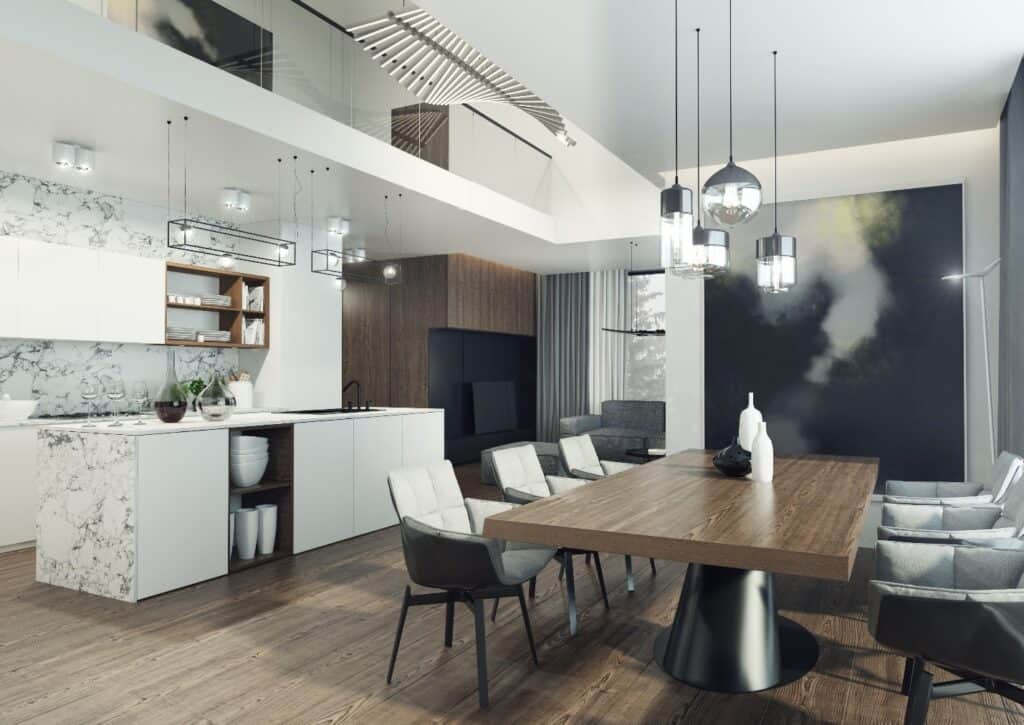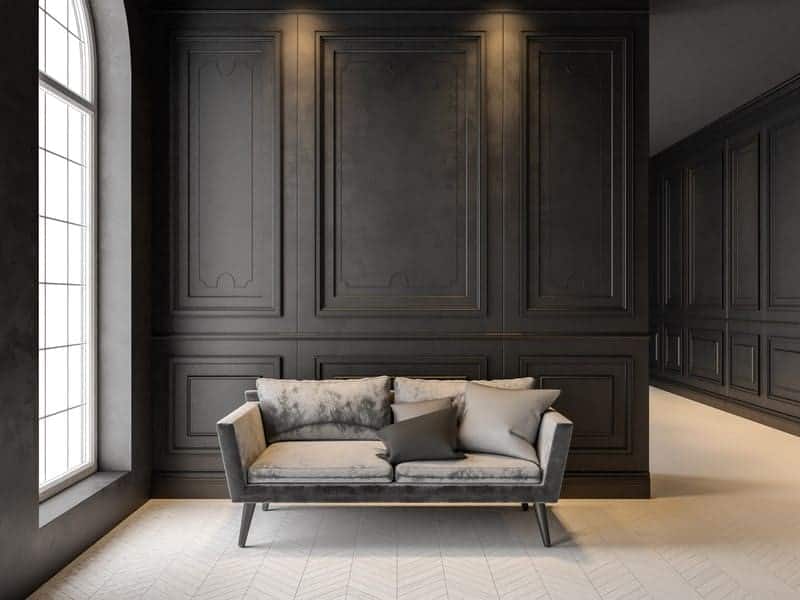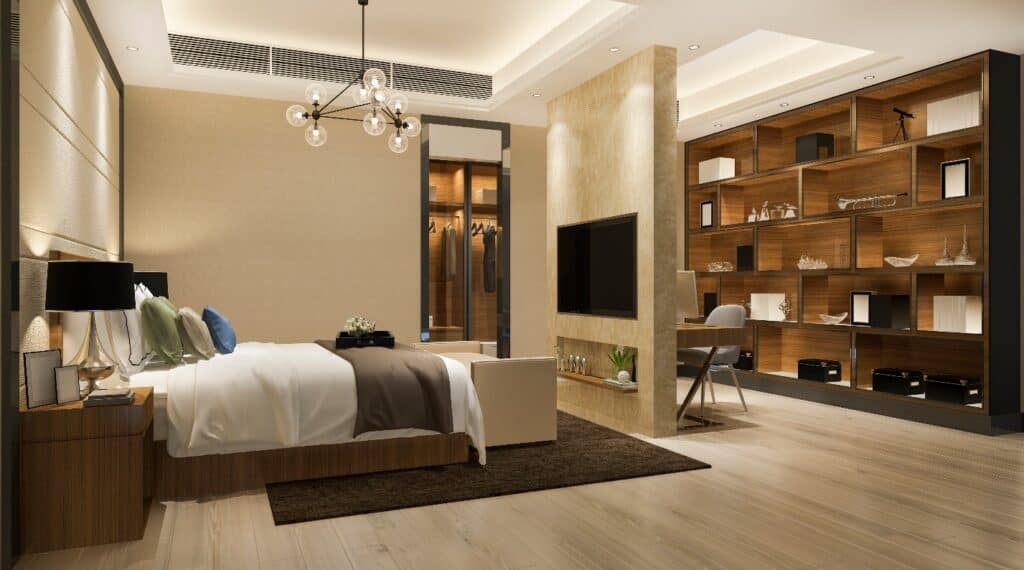
The art of interior home design is an expressionistic form of lifestyle that is required for both new house construction and home remodeling.
It is the interior home design that expresses both the lifestyle and architectural features of the house construction.
Interior home design can be implemented both a professional interior designer (aka decorator) or a remodeling contractor or a home builder (aka contractors).
To make sure that your building journey remains true to a design you must hire the right kind of expertise to that will listen to your needs and reproduce them into a finished house project.
It is on the basis of your requirement that you have to select between a decorator or a contractor.
Are you venturing into the world of home remodeling or new house construction for the first time?
You must be wondering about the difference between these two types of professionals.
In this blog, we shall take a closer look at these professionals and help you make the best decision for your interior home design.
Learn about interior home design styles using contractors or decorators
Differences between Decorators & Contractors
Possessing a professional degree in designing, a decorator has been trained and licensed to understand how space translates functionally.
Apart from their expert knowledge in spaces, these professionals are also skilled in the use of textures and colors.
Contractors traditionally have more skill with architectural design, but have staff members that are skilled with the selection of products and color.
However, do not make the mistake of confusing them with interior decorators. There is a fine line between the two groups of professionals.
The primary difference between the 2 professional groups is while contractors deal in structural changes as well as decorations, decorators are not likely to possess these technical design skills.
When it comes to remodeling contractors, they assume greater and significant responsibilities like providing labor, materials, equipment, appointing sub-contractors, and so on.
If your home remodeling project involves multifarious trades and is complex, you should hire the contractor as your professional.
Are you pondering how to choose the right contractor for your project? Get all the details in our infographic.
When to Choose an Interior Designer?
Let us get it straight, your choice is guided by your needs. Thus, you must first understand your requirements before selecting a professional.
Do you want to redecorate the living space while remodeling your home? If yes, then you can seek help from an interior designer.
Also, should you want a well created and furnished interior home design, you can add these services to the scope of work with the same professional.
Aware of the latest trends, interior designers can easily implement changes and boost the property value of your home thereby making it attractive to the prospective home buyers. Do you want to hire a professional with vast connections?
Hire an interior designer because such an expert is well-connected with local workers and specialty shops for quality materials.
When Should You Hire Remodel Contractors?
Do you need to alter the structure or construction elements of your home? If yes, then you must go for seasoned remodel contractors.
With help from these experts, you can spruce up the decorations as well as the functionalities of your interior design.
Hiring a remodeling expert is the best way to make your home aesthetically appealing, strong, and durable.
Being full-time professionals, remodelers can handle complex construction works and complete them with in the terms and conditions negotiated.
For complete re-configuration of your home, you must never take any risk and simply select a remodeling professional.
With their premier workmanship, these experts can turn your aging home into a breathtaking abode. Do you want to read the benefits in detail?
Click the link for an interesting discussion on the same subject – How to Choose a Remodeling Contractor.
Factors Worth Considering While Making a Choice
Here are the top 3 considerations you must know before choosing the right professional for your interior home design project.
Know Your Numbers
Determine the portions of your house you would like to remodel, and how you wish that to be achieved.
Develop and analyze your investment budget and decide the timeline within which you are planning to realize your goals.
Besides, you will also have to gather estimates from several contractors and interior designers.
Do Extensive Research
If you want to get high-quality renovation results, avoid selecting any random professional.
It might take some time, but doing your research will help you connect with the right expert.
Seek recommendations from your near and dear ones. You can also meet the shortlisted professionals in person to understand their offerings thereby making the right choice.
Be cooperative
Engaging the right expert is important to make your home remodel journey worthwhile.
To establish a cordial professional association, both the parties must value and respect each other’s opinions, viewpoints, and suggestions.
Cannot decide how to go about with this point? Read our blog and clear your doubts Tips for Effective Interaction With Your Remodeling Contractor.
Experience Well Defined Architecture & Unique Style with Interior Home Design
As we have already dealt with the remodeling aspect in several of our previous writings, we are placing a special focus on the interior designing part in this next section.
As it is a combination of art and science, the discipline of interior design is capable of creating a memorable living space.
When it comes to interior designing, we believe that there are three important principles of it.
First, the room needs emphasis such as a thing of interest that attracts the attention of the onlookers.
Second, harmony has to be created from the combination of different elements, their repetition, and transition from one space to another.
Third and the last factor is balance, which is about achieving proportions in terms of spacious relationships such as radial, asymmetrical, or symmetrical.
If you want to delve deeper into these factors, we suggest you read Interior Design to New Construction and Renovation.
Complementing principles with styles
Although these basic principles are extremely important, they have to be aligned with specific styles to optimize the interior home design outcome.
There are different types of architectural styles and we have handpicked the top choices for discussion.
Going through the following list will help you understand all types of decorating styles available in the home remodeling market before commencing with your renovation project.
No matter which style you go for, remember, every interior home design style involves a unique process and method of house remodeling.
The Top 17 Interior Home Design Styles
Modern style – Even though the terms of contemporary and modern are interchangeably used, that is not fundamentally correct. As they stand for different architectural and decorating themes, there is a fine line between the two.
Shaped in the mid 21st century, the modern style is recognized as the prominent mid-century architecture.
Similar to its namesake, the modern interior design has also been characterized by pristine structural lines and furniture of quirky colors and geometric shapes.
This type of design is identified by natural materials such as stone, wood, and glass, and numeral color palettes.
Contemporary style – Without a distinctly defined style, contemporary design is more about what is in vogue or trending in the current times.
In a wider sense, the contemporary style promotes the incorporation of non-traditional geometric shapes such as glass exterior walls, curved walls, and high volume rectangular rooms, and so on.
This design style is quite fluid and keeps evolving over time. Due to its dynamic nature, this style uses or borrows from other design styles to keep redefining its style form.
Industrial – Popular for its warehouse appearance, the industrial style stands out for displaying the concrete structure, unfinished steel look, and exposed mechanical piping as an integral part of the quirky decor.
This style can successfully be incorporated while designing condominiums and urban lofts in both mid-rise and high-rise buildings.
Remember, you have to hire the right professionals to stay assured of the desired designing results.
Minimalist – Almost similar to modern design, the minimalist style is unique for creating simple color palettes as well as very meticulous lines.
The minimalist design brings down the amount or intensity of accessories and furnishes.
As this style represents minimalism, which means less, it is about achieving the maximum harmony and balance using bare minimum decorations or accessorizing.
Mid-century – This style dates back to the 1950s and 1960s when single-family ranch homes were popular.
With large & airy windows and vaulted ceilings, these unique homes would allow the outside environment to become one with the interior design style of the living space.
Forming synergy with the natural sunlight, the earth-based hue schemes are one of the major highlights of this style.
Overall, these homes allow nature to be an integral part of them.
Transitional – Like a cross between modern and traditional, transitional design is a hybrid style.
Noted as one of the popular traditional architectural designs, the transitional style is characterized by the use of materials like glass and steel.
Its color schemes are calmer and much more soothing when compared to the vibrant color palettes of other traditional design styles.
Traditional – Traditional is considered by many to be one of the most popular of classic designs.
This style of interior typically has dark rich color schemes featured on finished products like doors, windows, and stairways in best home renovations projects.
Traditional homes are commonly 2 stories in nature and have box-like architectural features with much defined room spaces. Pastel colors are common with traditional decorating.
Hollywood Regency design style – It can be traced back to the 1940’s to 1960’s. The general style has the glamour of the art deco period and the sophistication of luxury furnishings and details.
Normally cast in bold yet stately color schemes with an influence of French furnishings is present.
Shabby Chic – The style has a foundation of vintage French antique furnishings with a tasteful but lived-in look décor in several projects of home renovations.
Normally soft base pastel colors with distressed trimmings of accessories. These appointments do well with an overstuffed sofa set for ease and casual comfort associated with this interior style.
French Country design – It has an old-world farmhouse feeling and appearance, commonly with heavy wood furniture and soft warm colors.
The use of natural fieldstone and brick interior features is also a trademark of this interior style.
The style is also known for the use of European chairs and an absence of sofas.
Bohemian – This symbolizes a style of chic furnishing pieces with vintage or flea market items. It represents a casual carefree lifestyle with ornate personalized furniture and accessories.
Rustic design style – It is a very casual decor with pieces that have a worn appearance in interior design.
The use of recycled woods and stone contributes to the charm of a former era. This casual look has become a cornerstone for second home decor.
You can either hire interior designers or remodeling contractors to realize this style for your home space.
Scandinavian – Now, this interior style comes from the Nordic region of Europe and is famous for its furniture.
The furniture has sculptured lines and is simple in its presentation. The design scheme is commonly white base color with interesting fabrics and patterns.
The feeling of the rooms has an artistic flair to its appeal.
Hamptons – The style represents a seaward casual coastal lifestyle with exposed natural materials that weather to natural beauty.
This is a relaxed beach or ocean existence designed for warm days and cool balmy nights. Coastal colors are often whites, light blues, and greens reflective of the watery environment.
Art Deco design style – Originated in the 1920’s, this style is considered ornate in its selection of furnishings and general architectural appointments.
This style is often associated with an affluent elegance of the times. The furnishing pieces are often glamorous and sleek in their appearance and still popular in New Construction in Houston.
Eclectic design style – Quite similar to the bohemian style but commonly defined differently due to bold color choices, consistent patterns, and textures.
Furnishes and accessories might be rare pieces and shapes and become focal points themselves. It has more of an ad-hoc appearance.
Asian style – It can either a Feng Shui influence or a Zen approach of decor and interior design.
These styles are minimal in their basic appearance but have modern style influence concerning bringing the outside to the inside and the high levels of natural light. These interior styles have a clear focus on harmony.
Conclusion – Whether you are building a new home or remodeling the interior home design of your living space, it is better to stick to the original architectural type and designs intended for your home.
This is because altering the fundamental architectural theme of your house can be a quite challenging and complex task to achieve.
If you are still willing to take the risk, you can go ahead but we suggest you hire only expert & experienced professionals for the job.
It is on the basis of your requisites that you have to choose between interior designers, remodel contractors and custom home designs.













